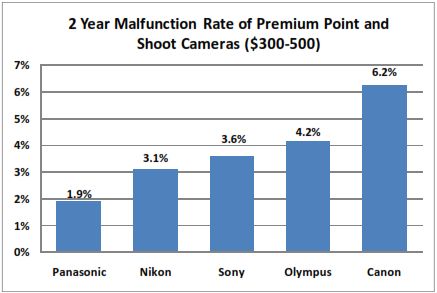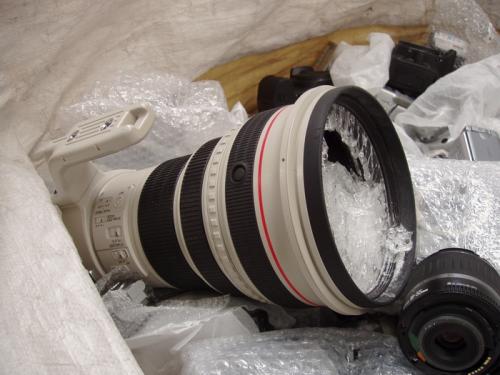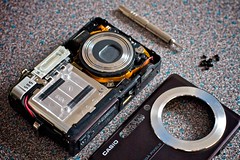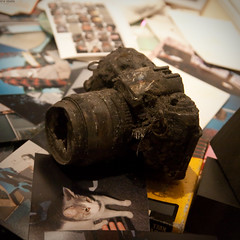When buying a photo camera, we often research in order to decide if this is the best camera, if its features will be goo enough, but will it be robust enough? Will it be useful or necessary to purchase a warranty contract extension? Will it fail very soon?
When somebody asks me these questions (and it happens quite often since I consider myself some kind of photography expert), I am usually without good answers; Nobody really speaks about this dirty little secret: Reliability of photo cameras is a taboo issue. In most cases, talking only happens for very extreme situations (I will not mention any pro camera events in the past few years). But on a daily basis, will my camera follow me everywhere? will it survive the bad treatment I will apply? Or will it fail at the sight of the first cloud (of dust or rain)? Preferably just a couple of days after the end of the warranty period?
So, I decided to collect more than the usual information to try and answer these questions with more than: Entry-level cameras are too cheap to be robust, are less protected than pro cameras; And, mechanics fail more than electronics.
And, I found a few interesting articles with adequate documentation. Of course, they are the rightful product of the business of some shops repairing or renting equipment and accepting to share their data with us.
And I found interesting data. For example, there is nearly no information on photo cameras, or camera bodies. But SquareTrade published rather detailed report about the repairs they did in the recent years (though mostly on point-n-shoot cameras) with some frightfully clear conclusions, like:
- More than 10% of the cameras failed before 2 years
- The statistical projection tells that there are/will-be more than 15% failure within 3 years
- Accidents are a major cause for failure: 40% of cameras were broken in such a way; We are rougher than our cameras!
- The more expensive, the more robust
- For SLR cameras, Canon and Nikon go hand-in-hand
And to think that the failure rate of major brands is around 4% within two years for a camera whose price is nearing 1000€…
But, look at the graph below:

I would like to believe that you can extend these figures out of point-n-shoots and into the SLR market, but my own professional experience with quality and reliability management (in the automotive world, if you want to know) tells me that we should not even try.
On the opposite, I found additional data about interchangeable lenses to plug into our SLR cameras. Two studies from LensPlay and LensRentals bring some more light to the issue.
From LensPlay, hundreds of lenses and users have been analyzed: among the voluntary answers provided for Canon, Nikon, Pentax, Minolta/Sony, Tamron, Tokina and Sigma, only Minolta/Sony produced less than 200 answers (a pretty nice representation of the market).

| Lens brand | Failure rate |
| Pentax | 7% |
| Canon | 8% |
| Nikon | 8% |
| Minolta/Konica/Sony | 10% |
| Tamron | 15% |
| Tokina | 16% |
| Sigma | 22% |
| The other lens brands | 10% |
LensRental gives us a finer status because they go down to a model-by-model level. So, it’s no longer necessary to compare brands, but you can get a good idea of which glass piece is more fragile or more sturdy than others, forgetting about the good (or bad) fames.
| Lens | Annualized Repair Rate | Typical Problems |
|---|---|---|
| Sigma 120-300mm f/2.8 | 41% | Zoom mechanism, calibration, autofocus |
| Sigma 18-200mm OS | 37% | OS, Autofocus, zoom, barrel separation |
| Nikon 18-200mm OS | 31% | OS, Autofocus, zoom |
| Sigma 50-500mm | 31% | Zoom mechanism, autofocus |
| Canon 300mm f/4 IS | 25% | IS, autofocus electronics, barrel separation |
| Tamron 70-200mm f/2.8 | 27.5% | tight mount (Canon), autofocus |
| Tokina 12-24mm f/4 PRO | 25% | zoom mechanism, autofocus |
| Nikon 17-55mm f/2.8 | 25% | Calibration, zoom ring, motor burnout |
| Canon 50mm f/1.4 | 22.5% | AF motor |
| Canon 35mm f/1.4 | 22% | Calibration, focus mechanicals |
| Canon 17-55mm f/2.8 EF-S IS | 22% | IS failure, AF electronics, ERR99 |
| Canon 10-22mm EF-S | 17.5% | barrel separation, autofocus |
| Nikon 70-200mm f/2.8 VR | 17% | zoom mechanism, manual focus clutch |
| Nikon 17-35mm f/2.8 | 17% | calibration, electronics |
| Nikon 80-400mm | 15% | Electronic issues |
| Canon 85mm f/1.2 | 13% | Electronic issues |
| Sigma 30mm f/1.4 | 12.3% | calibration |
| Canon 24-70mm f/2.8 | 11% | Calibration, zoom mechanism |
| Canon 100-400mm IS | 11% | Zoom tension ring, Err99, calibration |
| Nikon 14-24mm f/2.8 | 10% | zoom mechanism |
We also appreciate a lot some of the additional comments like:
- The super tele prime lenses (300mm f/2.8, 400mm f/2.8, 500mm f/4, 600mm f/4) from either Canon or Nikon are among the more reliable lenses (their simplicity is probably a good reason for such a score).
- The Sigma 120-400mm & 150-500mm had a 45% repair rate (as long as they were included in the LensRentals catalog of products).
- The Canon 50mm f/1.2 and Sigma 100-300mm are well under 10% (which is considered a good level in LensRentals)
Of course, these raw figures must be taken with a grain of salt: Rentals are often more mis-handled than bought parts, but the relative results are quite certainly representative of the underlying reality. And for example, the Canon 100-400mm seems to have an unfair bad fame about the reliability of its stabilization mechanism.
All in all, many reasons to treat your photo hardware with some care…
Sources:


Comments
4 responses to “Photography, so many failures!”
Okay, I’ll bite. I found this article good to know. Thanks for the write up.
wow so canon is the crappiest brand of camera? who’d have thunk it.
At least, this seems very true for Point-and-Shoot compact-type digital cameras…
Hi
For your info…
Its an out of date camera now, I know, but I bought a Canon D350 in 2007. (it was just out of date then, too!
I took 8,570 pictures and then the shutter failed in 2010 (3 years of life).
I was rather disappointed, since my Nikkormat FTn lasted 25 years. Then I realised I only took 4000 pictures with the Nikkormat in that time.
So in a way I am neither surprised nor disappointed that the Canon broke. It was an electronic failure (too expensive to fix) and electronics are weaker than mechanics, I’d say.
I now have a Nikon D90 + 18-200 zoom – and already I have electronic contact problems between the two.
I doubt they will last for 8000 pictures.
Cheers
Hugh